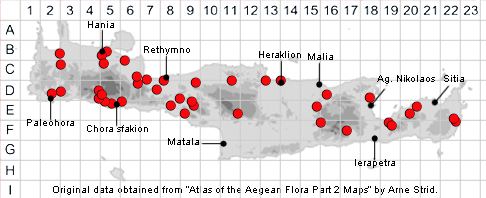SPECIES DESCRIPTION
DELPHINIUM STAPHISAGRIA
Family and Genus:- See- RANUNCULACEAE/Sect. STAPHISAGRIA
Common Names:- Stavesacre, Lice-bane
Homotypic Synonyms:- Delphidium staphysagria, Delphinium staphydium,
Staphysagria macrosperma.
Meaning:- Delphinium (Gr) Dolphin. A name used by the Greek physician and
botanist Dioscorides for the unopened flower's appearance.
Staphisagria (Gr) Like wild grapes.
General description:- Robust, herbaceous plant.
Stems:-
1) 30-100 cm, stout, with erect, unbranched patent-pilose.
Leaves:-
1) Large, palmately 5- to 7-lobed, pubescent on both surfaces with mixed very short
and longer hairs; segments entire or 3-lobed, with ovate-lanceolate, or oblong,
acute lobes.
a) basal, ± withered at anthesis.
b) cauline, long-petiolate..
Flowers:-
1) Deep blue, large, 24-40 mm, borne in long racemes;
a) spur, produced from the upper sepal, short, blunt and down-turned, shorter
than the petals not more than one third of their length.
2) Perianth-segments, 13-20 mm.
3) Limb, of the lateral honey-leaves, gradually narrowed into a claw.
Fruit:-
1) Follicles, c. 22 x 10 mm, densely pubescent, narrowed into a short beak.
2) Seeds, 3-6, large (c. 6 mm long), triquetrous to prismoid.
Key features:-
1) Lateral honey-leaves, glabrous, margins not ciliate.
2) Limb, of upper honey-leaves, unwinged.
3) Seeds, few, 5·5-7·5 mm. large (c. 6 mm long), triquetrous to prismoid.
4) Spur, 1/5-1/3 as long as perianth-segments.
Habitat:- Seasonally damp spots in gorges, olive groves, orchards, streambeds and
ruderal habitats. 0-800 m.
Distribution:- Coastal areas throughout Greece, lacking in the interior. -
Widespread in the Mediterranean region, eastwards to SC Anatolia. A somewhat
scattered distribution across Crete, but locally abundant.
Flowering time:- Apr-July.
Photos by:- Steve Lenton

